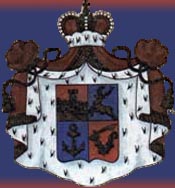
The Village of Tsinandali
The village of Tsinandali was first mentioned in the historical annals in the fifteenth century. First, when Alexander, the then King of the Eastern Georgian Kakheti province granted the village of Sakharisi to the town of Mtskhetá; afterwards the name of the village emerged in the correspondence issued by Kings Teimuraz I and Erekle I. The settlement of Tsinandali was mentioned in "Geography of Georgia" (XVIII Century) by Vakhushti Bagrationi, the son of King Vakhtang VI.
Prior to the fifteenth century, official annals referred to the village as Sakharisi. Remnants of the settlement were preserved on the slopes of the mountain overlooking the village. The name Tsinandali means “former.” Forefathers of the present inhabitants of the village of Tsinandali were targets of periodic invasions. Citizens had to find refuge in nearby mountains and the woods along the Alazani River. In peaceful times the people returned to their former dwellings.
As to the origin of the Chavchavadze family in Tsinandali, the family dates back to the XVII century. In 1680, King Erekle I resettled several families from the village of Tsavchavi in Mtiuleti province to Tsinandali including the Chavchavadzes. Not only did the Chavchavadzes prove to be loyal to the King and to the country, but they also gained fame as a result of their vine growing and winemaking skills.
The economic activities of many residents of Tsinandali were linked to the Chavchavadze estate, especially during the lifetimes of Garsevan and Alexander Chavchavadze. Apart from vine growing and winemaking, Alexander Chavchavadze engaged in silk production and cattle breeding. He also owned water-mills, brick and tile workshops, smithies, and lumber shops employing over 1500 peasants, whom he treated well. He taught them innovative methods of vineyard cultivation and gave them vines from his nursery. As a result of this kindness, employees became productive, and Tsinandali became one of the cultural, political and economic centers of the country.
Source bibliography:
- Bogvelishvili,George. Tsinandali Tbilisi: Sabchota Saqartvelo,1967
- Chkhkeidze,Tengiz. Sauplistculo mamulebi Kaxetshi. 1885-1921 [The principal landlords in Kakheti. 1885-1921]. Tbilisi:Metsniereba, 1968.
- Kekelia, Korneli, and Baramidze, Alexander, ed. Ioane Batonishvili: "Kalmasoba" [John Batonishvili’s "Kalmasoba"] Tbilisi: Sakhelgami, 1936.
- Khaukhchishvili, Simon, ed., Kartlis Tskhovreba; Vakhushti Batonishvili: Agtsera samephosa Saqartvelosa: [Life of Kartli; Vakhushti Batonishvili’s Describing Kingdom of Georgia] vol. IV., Tbilisi: Sabchota Saqartvelo, 1973.
- Kvaratskhelia, O. Tsinandlis parki [The park of Tsinandali]. In the Journal: Sabchota xelovneba [Soviet art]. Tbilisi: 1969.
- Megutnishvili, Soso, Tsinandali, Saqartvelos kulturis sagandzuri [Tsinandali_ Treasury of Georgian Culture] Tbilisi: Gr.Robaqidze Un-tis Gamomcemloba, 2006.
- Natsvlishvili, Natela. Memamuluri meurneobis kapitalisturi evolutsia saqartveloshi [The capitalistic evolution of landlord economy in Georgia]. Tbilisi: Metsnierreba, 1971.
[ TOP ]
